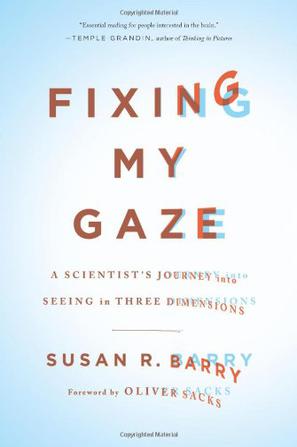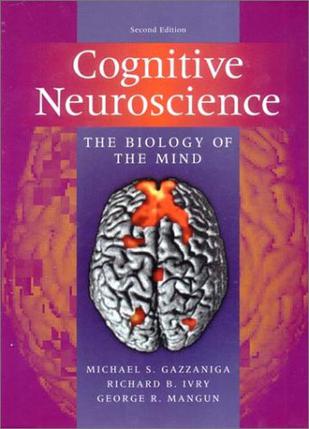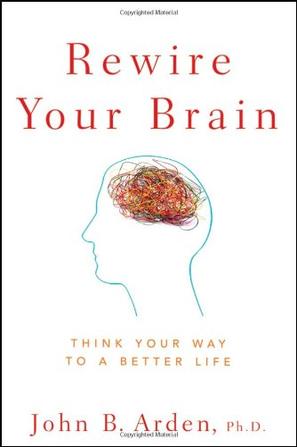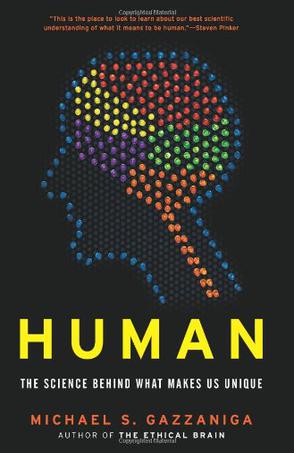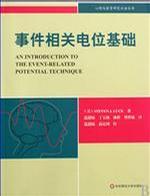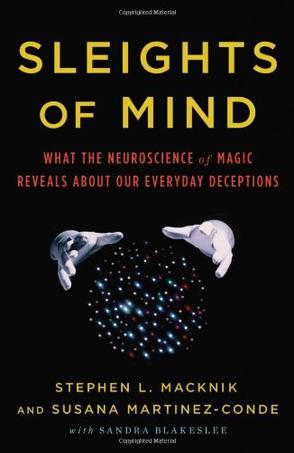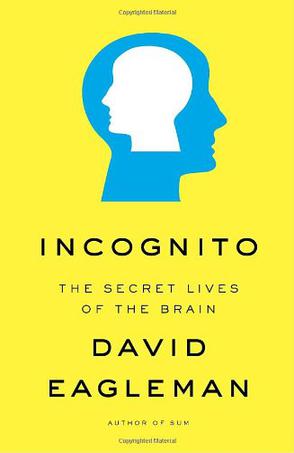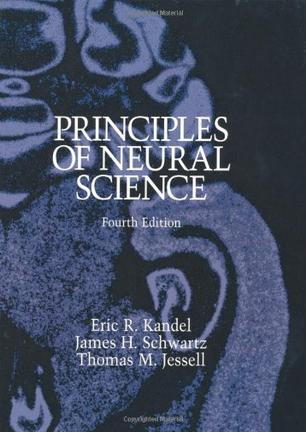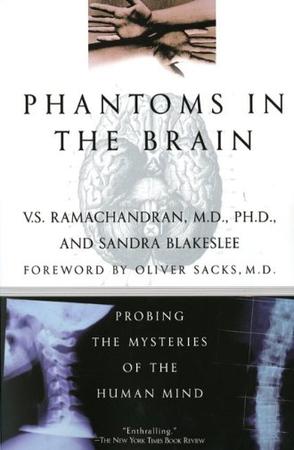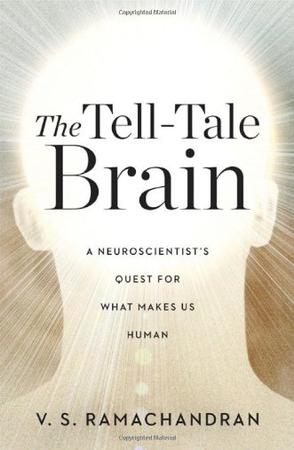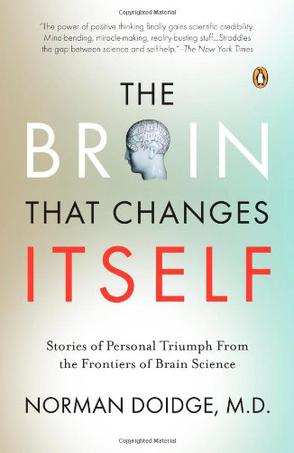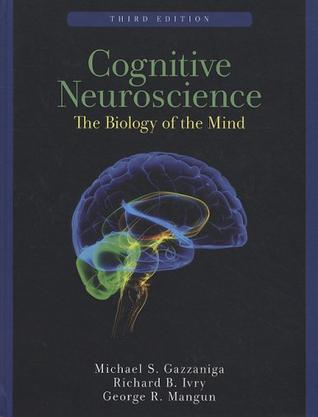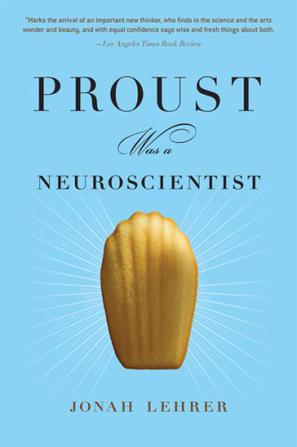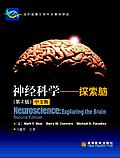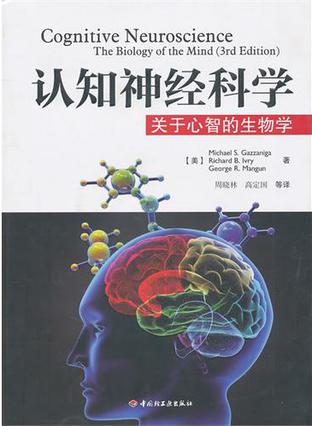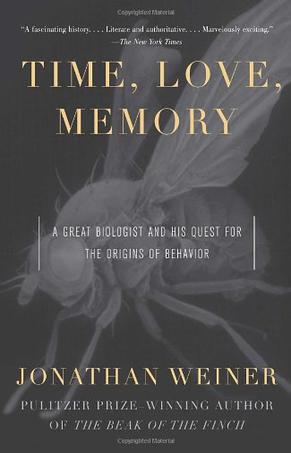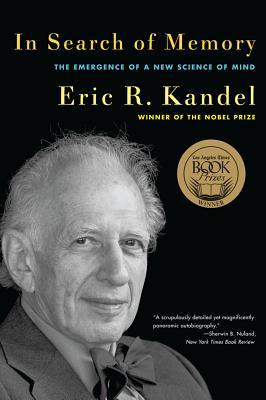欢迎来到相识电子书!
标签:Neuroscience
-
Fixing My Gaze
When neuroscientist Susan Barry was fifty years old, she took an unforgettable trip to Manhattan. As she emerged from the dim light of the subway into the sunshine, she saw a view of the city that she had witnessed many times in the past but now saw in an astonishingly new way. Skyscrapers on street corners appeared to loom out toward her like the bows of giant ships. Tree branches projected upward and outward, enclosing and commanding palpable volumes of space. Leaves created intricate mosaics in 3D. With each glance, she experienced the deliriously novel sense of immersion in a three dimensional world. Barry had been cross-eyed and stereoblind since early infancy. After half a century of perceiving her surroundings as flat and compressed, on that day she was seeing Manhattan in stereo depth for first time in her life. As a neuroscientist, she understood just how extraordinary this transformation was, not only for herself but for the scientific understanding of the human brain. Scientists have long believed that the brain is malleable only during a “critical period” in early childhood. According to this theory, Barry’s brain had organized itself when she was a baby to avoid double vision – and there was no way to rewire it as an adult. But Barry found an optometrist who prescribed a little-known program of vision therapy; after intensive training, Barry was ultimately able to accomplish what other scientists and even she herself had once considered impossible. A revelatory account of the brain’s capacity for change, Fixing My Gaze describes Barry’s remarkable journey and celebrates the joyous pleasure of our senses. -
Rewire Your Brain
How to rewire your brain to improve virtually every aspect of your life-based on the latest research in neuroscience and psychology on neuroplasticity and evidence-based practices Not long ago, it was thought that the brain you were born with was the brain you would die with, and that the brain cells you had at birth were the most you would ever possess. Your brain was thought to be “hardwired” to function in predetermined ways. It turns out that's not true. Your brain is not hardwired, it's "softwired" by experience. This book shows you how you can rewire parts of the brain to feel more positive about your life, remain calm during stressful times, and improve your social relationships. Written by a leader in the field of Brain-Based Therapy, it teaches you how to activate the parts of your brain that have been underactivated and calm down those areas that have been hyperactivated so that you feel positive about your life and remain calm during stressful times. You will also learn to improve your memory, boost your mood, have better relationships, and get a good night sleep. Reveals how cutting-edge developments in neuroscience, and evidence-based practices can be used to improve your everyday life Other titles by Dr. Arden include: Brain-Based Therapy-Adult, Brain-Based Therapy-Child, Improving Your Memory For Dummies and Heal Your Anxiety Workbook Dr. Arden is a leader in integrating the new developments in neuroscience with psychotherapy and Director of Training in Mental Health for Kaiser Permanente for the Northern California Region Explaining exciting new developments in neuroscience and their applications to daily living, Rewire Your Brain will guide you through the process of changing your brain so you can change your life and be free of self-imposed limitations. 点击链接进入中文版: 当美国倒下 -
Human
One of the world's leading neuroscientists explores how best to understand the human condition by examining the biological, psychological, and highly social nature of our species within the social context of our lives. What happened along the evolutionary trail that made humans so unique? In his widely accessible style, Michael Gazzaniga looks to a broad range of studies to pinpoint the change that made us thinking, sentient humans, different from our predecessors. Neuroscience has been fixated on the life of the psychological self for the past fifty years, focusing on the brain systems underlying language, memory, emotion, and perception. What it has not done is consider the stark reality that most of the time we humans are thinking about social processes, comparing ourselves to and estimating the intentions of others. In Human, Gazzaniga explores a number of related issues, including what makes human brains unique, the importance of language and art in defining the human condition, the nature of human consciousness, and even artificial intelligence. -
事件相关电位基础
认知神经科学中的事件相关电位(ERP)技术使得科学家们能够观察到反映各种认知过程的人类脑活动。在《事件相关电位基础》一书中,Steven LuckX寸认知神经科学领域以及相关领域,包捂晴绪神经科学领域和实验精神病理学领域中的实用ERP实验问题,提供了最可充分理解的指导。本书可用作教学与实验的指南。对于那些虽然自己不进行ERP研究,但却需要理解和评价文献中ERP成分的研究者,本书也可用作参考。这本书总结了ERP理论与实践的积累,由此提供了怎样设计、进行,乃至解释ERP实验的详尽指导。这本书还介绍了所需要的理论背景,用以理解一个实验为什么会以某种方式完成。Luck集中地讨论了全世界很多先进ERP实验室所用的那些最基本的技术,这些技术反映了电生理记录的长期发展历史,并为更先进的方法提供了良好的基础。 -
Sleights of Mind
Have you ever wondered how a magician saws a woman in half? Or makes coins materialize out of thin air? Or reads your mind? Magic tricks work because humans have a hardwired process of attention and awareness that is hackable. A good magician uses your mind's intrinsic properties against you in a form of mental jujitsu, to fool you every time, even when you know full well that you are being tricked.Now Stephen L. Macknik and Susana Martinez-Conde, the founders of the exciting new discipline of neuromagic, have convinced some of the world's greatest magicians to reveal their techniques for tricking the brain. This fascinating book is the result of the authors' worldwide exploration of magic and how its ancient principles can now be explained using the latest discoveries of cognitive neuroscience.The secrets behind magic tricks reveal how your brain works not just when watching a magic show but in everyday situations. For instance, if you've ever found yourself paying for -
Incognito
http://www.nature.com/nature/journal/v473/n7347/full/473280a.html -
第七感
《第七感:心理、大脑与人际关系的新观念》以心理学为理论基础,通过解释大脑复杂的运作机制,讲述了心理和大脑的协同作用。将古老的冥想实践与现代神经科学、心理疗法进行了整合,揭开了心理、大脑与人际关系相互作用的神秘面纱。西格尔博士提出的第七感理论,堪与弗洛伊德的潜意识理论、达尔文的进化论并驾齐驱,在身、心与大脑整合方面,无人能出其右。 人类的五种感官知觉,让我们得以探索外在世界;第六感,让我们得以察觉自己内在的生理状态。第七感,则是一种向内观看的能力,也是《第七感:心理、大脑与人际关系的新观念》作者丹尼尔•西格尔博士结合脑神经科学与心理临床治疗的研究结晶。第七感不仅使我们关注自己的内心,也使我们体悟他人的感受, 从而在彼此间建立情感联结。 《第七感:心理、大脑与人际关系的新观念》是作者丹尼尔•西格尔25年临床经验的成果。它指导我们如何掌握第七感这项技能,让读者了解,其实我们有比自己想象的更多的机会去改变自己的心理、大脑、人际关系,甚至是某些与生俱来的性格特点,从而实现自我蜕变,获得幸福、健康,以及令人满意的人际关系。 海报: -
Principles of Neural Science
This is the most authoritative introduction to the brain, its structure, function, development, and control of behavior available today. It presents both a comprehensive summary of the state of the science and a full discussion of historical issues in the study of the brain. Neuroanatomy, cell and molecular mechanisms, mechanisms, of signaling, and development are thoroughly described in the context of the cognitive approaches to behavior. Thoroughly revised, with a new full-color art program, this text was re-designed to be more user friendly. Also featured is an expanded treatment of the development of the nervous system, the genetic basis of neurological and psychiatric diseases, the cognitive neuroscience of perception, and icon channel mechanisms. -
Phantoms in the Brain
Neuroscientist V.S. Ramachandran is internationally renowned for uncovering answers to the deep and quirky questions of human nature that few scientists have dared to address. His bold insights about the brain are matched only by the stunning simplicity of his experiments -- using such low-tech tools as cotton swabs, glasses of water and dime-store mirrors. In Phantoms in the Brain, Dr. Ramachandran recounts how his work with patients who have bizarre neurological disorders has shed new light on the deep architecture of the brain, and what these findings tell us about who we are, how we construct our body image, why we laugh or become depressed, why we may believe in God, how we make decisions, deceive ourselves and dream, perhaps even why we're so clever at philosophy, music and art. Some of his most notable cases: A woman paralyzed on the left side of her body who believes she is lifting a tray of drinks with both hands offers a unique opportunity to test Freud's theory of denial. A man who insists he is talking with God challenges us to ask: Could we be "wired" for religious experience? A woman who hallucinates cartoon characters illustrates how, in a sense, we are all hallucinating, all the time. Dr. Ramachandran's inspired medical detective work pushes the boundaries of medicine's last great frontier -- the human mind -- yielding new and provocative insights into the "big questions" about consciousness and the self. -
The Tell-tale Brain
Drawing on strange and thought-provoking case studies, an eminent neurologist offers unprecedented insight into the evolution of the uniquely human brain.V. S. Ramachandran is at the forefront of his field-so much so that Richard Dawkins dubbed him the "Marco Polo of neuroscience." Now, in a major new work, Ramachandran sets his sights on the mystery of human uniqueness. Taking us to the frontiers of neurology, he reveals what baffling and extreme case studies can teach us about normal brain function and how it evolved. Synesthesia becomes a window into the brain mechanisms that make some of us more creative than others. And autism—for which Ramachandran opens a new direction for treatment—gives us a glimpse of the aspect of being human that we understand least: self-awareness. Ramachandran tackles the most exciting and controversial topics in neurology with a storyteller's eye for compelling case studies and a researcher's flair for new approaches to age-old questions. Tracing the strange links between neurology and behavior, this book unveils a wealth of clues into the deepest mysteries of the human brain. 15 black-and-white illustrations -
The Brain That Changes Itself
在线阅读本书 An astonishing new science called neuroplasticity is overthrowing the centuries-old notion that the human brain is immutable. In this revolutionary look at the brain, psychiatrist and psychoanalyst Norman Doidge, M.D., provides an introduction to both the brilliant scientists championing neuroplasticity and the people whose lives theyve transformed. From stroke patients learning to speak again to the remarkable case of a woman born with half a brain that rewired itself to work as a whole, The Brain That Changes Itself will permanently alter the way we look at our brains, human nature, and human potential. -
Cognitive Neuroscience
Taking a highly interdisciplinary approach, the authors balance cognitive theory, with neuroscientific and neuropsychological evidence to reveal what we currently know about how the human mind works and to encourage students to think like cognitive neuroscientists. The text has been reorganized to move more seamlessly from micro to macro level topics, and its underlying pedagogy strengthened in order to make it an even more effective teaching tool. Maintaining its commitment to highlight the most cutting-edge trends in the field, the third edition includes the first ever standalone chapter of its kind on social neuroscience. -
Proust Was a Neuroscientist
Amazon.com Review Amazon Significant Seven, December 2007: Proust may have been more neurasthenic than neuroscientist, but Jonah Lehrer argues in Proust Was a Neuroscientist that he (and many of his fellow artists) made discoveries about the brain that it took science decades to catch up with (in Proust's case, that memory is a process, not a repository). Lehrer weaves back and forth between art and science in eight graceful portraits of artists (mostly writers, along with a chef, a painter, and a composer) who understood, better at times than atomizing scientists, that truth can begin with "what reality feels like." Sometimes it's the art that's most evocative in his tales, sometimes the science: Lehrer writes about them with equal ease and clarity, and with a youthful confidence that art and science, long divided, may yet be reconciled. --Tom Nissley --This text refers to the Hardcover edition. From Publishers Weekly With impressively clear prose, Lehrer explores the oft-overlooked places in literary history where novelists, poets and the occasional cookbook writer predicted scientific breakthroughs with their artistic insights. The 25-year-old Columbia graduate draws from his diverse background in lab work, science writing and fine cuisine to explain how Cézanne anticipated breakthroughs in the understanding of human sight, how Walt Whitman intuited the biological basis of thoughts and, in the title essay, how Proust penetrated the mysteries of memory by immersing himself in childhood recollections. Lehrer's writing peaks in the essay about Auguste Escoffier, the chef who essentially invented modern French cooking. The author's obvious zeal for the subject of food preparation leads him into enjoyable discussions of the creation of MSG and the decidedly unappetizing history of 18th- and 19th-century culinary arts. Occasionally, the science prose risks becoming exceedingly dry (as in the enthusiastic section detailing the work of Lehrer's former employer, neuroscientist Kausik Si), but the hard science is usually tempered by Lehrer's deft way with anecdote and example. Most importantly, this collection comes close to exemplifying Lehrer's stated goal of creating a unified third culture in which science and literature can co-exist as peaceful, complementary equals. 21 b&w illus. (Nov.) Copyright © Reed Business Information, a division of Reed Elsevier Inc. All rights reserved. --This text refers to the Hardcover edition. -
神经科学
本书是国际流行的神经科学本科教材,美国的布朗大学、明尼苏达大学等著名高校以此为教材。该书体系新颖,全书只分四大部分,但包括了神经科学的方方面面, 这样的安排有助于学生抓住神经科学的精髓。全书附有3类专栏:“发现之路”(pathofdiscovery)邀请一些在神经科学研究领域做出重大发现的科学家介绍其发现的科研历程,有助于培养学生的科学理想和献身科学的精神;“趣味话题”(ofspecialinterest)深入介绍一些知识,有助于培养学生的科学兴趣;“脑的食粮”(brainfood)介绍一些与神经科学研究有关的实验方法和手段,让学生了解先进的神经科学研究方法,建立动手意识。作者MarkF.Bear是美国BrownUniversity神经科学教授。本书内容的第一篇为神经生物学基础,包括神经科学导论,神经元和神经胶质细胞,静息态的神经元膜,动作电位,突触传递,神经递质系统,神经系统的基本结构;第二篇为感觉和运动系统,包括化学感官,眼,中枢视觉系统,听觉和前庭系统,躯体感觉系统,运动的脊髓控制,运动的脑控制;第三篇为大脑和行为,包括脑和行为的化学调控,动机,性与脑,情绪的脑机制,脑的节律,语言和注意,精神疾病;第四篇为脑的变化,包括大脑连接,记忆系统,学习和记忆的分子机制。书后附有词汇、参考读物和索引。 -
认知神经科学
欢迎翻开第三版!每当像认知神经科学这样的新领域出现时,人们对它的前途并不总是信心满满,甚至怀疑它会不会昙花一现。对新领域的新鲜热情就像看着一只第一次站立起来的小鹿一样,她能行吗?这崭新的生命能否发育长大?这新的生命中能放射出真正的意义吗?10年后的今天,认知神经科学已经空前繁荣。我们可以从诸多方面体察这种进步:领先的大学已经着手实施创新举措,旨在发展专门的认知神经科学研究方向,以便为研究者提供这一领域研究所需的工具和跨学科研究的机会;新杂志每年都在创办,以适应认?神经科学新分支中文献数量的指数型增长;由于与会者人数激增,认知神经科学学会的年会年年爆满:从第一次会议时的400人陡增至2008年第十五次会议时的1800多人。 -
Time, Love, Memory
A fascinating history--. Literate and authoritative--.Marvelously exciting. -- The New York Times Book Review Jonathan Weiner, winner of the Pulitzer Prize for The Beak of the Finch , brings his brilliant reporting skills to the story of Seymour Benzer, the Brooklyn-born maverick scientist whose study of genetics and experiments with fruit fly genes has helped revolutionize or knowledge of the connections between DNA and behavior both animal and human. How much of our fate is decided before we are born? Which of our characteristics is inscribed in our DNA? Weiner brings us into Benzer's Fly Rooms at the California Institute of Technology, where Benzer, and his asssociates are in the process of finding answers, often astonishing ones, to these questions. Part biography, part thrilling scientific detective story, Time, Love, Memory forcefully demonstrates how Benzer's studies are changing our world view--and even our lives. -
In Search of Memory
From Publishers Weekly When, as a medical student in the 1950s, Kandel said he wanted to locate the ego and id in the brain, his mentor told him he was overreaching, that the brain had to be studied "cell by cell." After his initial dismay, Kandel took on the challenge and in 2000 was awarded a Nobel Prize for his groundbreaking research showing how memory is encoded in the brain's neuronal circuits. Kandel's journey into the brain spans five decades, beginning in the era of early research into the role of electrical currents flowing through neurons and ending in the age of genetic engineering. It took him from early studies of reflexes in the lowly squid to the founding of a bioengineering firm whose work could some day develop treatments for Alzheimer's and on to a rudimentary understanding of the cellular mechanisms underlying mental illness. Kandel's life also took him on another journey: from Vienna, which his Jewish family fled after the Anschluss, to New York City and, decades later, on visits back to Vienna, where he boldly confronted Austria's unwillingness to look at its collusion in the Final Solution. For anyone considering a career in science, the early part of this intellectual autobiography presents a fascinating portrait of a scientist's formation: learning to trust his instincts on what research to pursue and how to pose a researchable question and formulate an experiment. Much of the science discussion is too dense for the average reader. But for anyone interested in the relationship between the mind and the brain, this is an important account of a creative and highly fruitful career. 50 b&w illus. (Mar.) Copyright © Reed Business Information, a division of Reed Elsevier Inc. All rights reserved. --This text refers to the Hardcover edition. From Scientific American Kandel, who received the Nobel Prize in 2000, traces advances in understanding learning and memory. His own groundbreaking findings showed that learning produces changes in behavior by modifying the strength of connections between nerve cells. He conveys his immense grasp of the science beautifully, but it is his personal recollections that make the book especially compelling. He begins with his searing childhood memories of the German annexation of Austria and his family’s escape to the U.S. when he was nine. And he ends with a conference he organized in Vienna to examine the strange reluctance of Austria (unlike Germany) to acknowledge its role in the Holocaust. One comes away in awe of the scientific advances—and of a life well and fully lived. Editors of Scientific American --This text refers to the Hardcover edition.
热门标签
下载排行榜
- 1 梦的解析:最佳译本
- 2 李鸿章全传
- 3 淡定的智慧
- 4 心理操控术
- 5 哈佛口才课
- 6 俗世奇人
- 7 日瓦戈医生
- 8 笑死你的逻辑学
- 9 历史老师没教过的历史
- 10 1分钟和陌生人成为朋友

